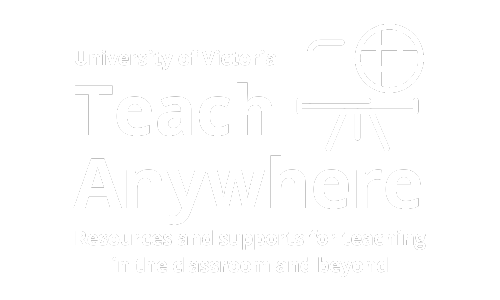About this guide
Today’s classrooms are more diverse than ever, with students bringing unique understandings and varied life experiences. To enhance the student experience, Universal Design for Learning (UDL) principles embrace access and inclusivity.
UDL is a research-based framework that removes barriers to learning and supports students in multiple ways of accessing knowledge and demonstrating their learning.
In this guide, we will explore the three principles of UDL, design benefits, applications in the classroom experience and ways to evaluate its effects. We finish with examples in action from UVic’s own teaching instructors and staff.
Last updated: February 5, 2024
Learning Objectives
- Understand the principles and benefits of universal design for learning
- Apply universal design for learning principles to course design and personal teaching contexts in manageable ways
- Evaluate and enhance instructional practices
Looking for more on UDL?
We are available to support you in training for UDL:
- Request a workshop
- Book a consultation
- Drop-in live support
Share your feedback!
We are actively committed to increasing the accessibility, usability, diversity, and inclusivity of our materials. If you experience any barriers to learning in this course, please contact us to let us. We also welcome any suggestions for future topics you would like us to cover.





